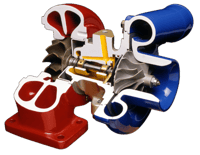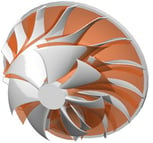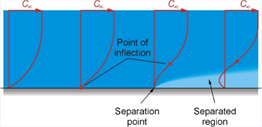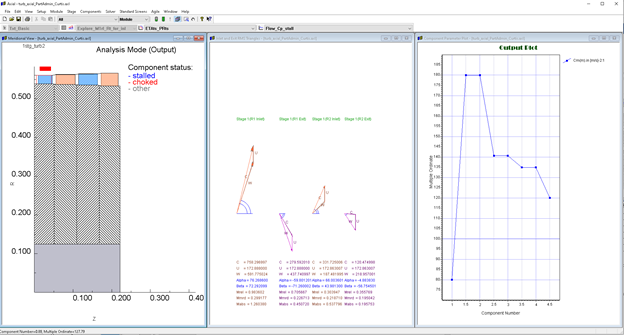On occasion I’m invited to a local middle school to give a talk to one of the science classes about ‘What Is Turbomachinery, and How Does It Work?’. I teach in several of the turbomachinery design courses we give at Concepts NREC, and while I’m comfortable in those courses, presenting at this level was different. I originally found it a challenge to come up with a good presentation that would keep the students' attention, while still providing some science education as requested by the science teacher that invited me. Derivation of the Euler turbomachinery equation was probably out. The attention getters that seemed to work best to get the conversation going included bringing our turbocharger cut-away (definitely the biggest hit of anything I brought), along with other interesting impeller samples. From there getting into the purpose of various types of turbomachinery (compressor vs turbine vs pump) and a very high level discussion of energy transfer to/from a fluid, seemed to flow. Getting them thinking about some of the physical aspects of turbomachinery operation (Just how fast is 100,000 rpm?) also seemed to keep their attention.



I was very impressed by how the students soaked in the information, and all the questions they asked. To be honest I think that was part of the expectation, as the students all took copious amounts of notes and were not shy about raising their hands, but the depth of their questions showed they were thinking at a good level about what was being presented.
To make sure we had some fun, towards the end of the hour I suggested we have a test to see what they learned. While there was no audible groaning, the room got very quiet, and a few student’s eyes got very big. The first question was ‘Now that you know what turbomachinery is, estimate how many pieces of turbomachinery are in your house’? 1? 5? 10? After letting them briefly think about this, I would then say, ‘OK, let’s create a list right now’. I was again very impressed by how well the students did – after getting them going with a few examples, they would quickly take over and add to the list. This ‘test’ was still part of the teaching moment as many were surprised that they are surrounded by turbomachinery in their homes. I have to give a shout-out to the science students at the Frances Richmond Middle School in Hanover, NH for the job well done during these presentations.
I have a very impressive list now of turbomachinery you might find in your home, but before presenting the list, I want to let everyone have a chance to think about it and provide your own input. Your assignment is to supply us with your own ideas or list. We we will gather all the input, add to our master list, and in a follow-on blog I will present the results.
There is one clarification needed when thinking about this ‘assignment’. Here at Concepts NREC we deal in what we consider to be traditional turbomachinery – rotating equipment that imparts or extracts energy to/from a fluid by energy transfer in the tangential or rotational frame via the dynamic action of moving blade rows. Think classical bladed turbomachinery impellers. There is another class of fluid machinery, typically seen in smaller fixed flowrate compressors or pumps – positive displacement (PD) equipment, which depends on a change in volume for operation, as opposed to the dynamic transfer of energy in classical turbomachinery. While the operating principle is different, these machines still impart pressure to a fluid and effectively cause fluid to move, so when my middle school students were making their lists of pumps, turbines, and compressors in their home, I did not exclude or separate out positive displacement equipment.

Here’s the Pop Quiz!
- List every piece of turbomachinery in your home
- Inside and outside (in your yard is OK)
- Positive displacement equipment OK to include
- Don’t include turbomachinery in your cars or any vehicle (that’s another list…)
Add your list to the comment section below, and I will share the results in my next blog.
In the meanwhile, if you would like to learn more about how turbomachinery works and is designed, we have a full suite of courses taught every year, from compressor design to pump design. Coming up next is ‘Turbomachinery Core Fundamentals’. This intensive short course aims to give those involved with designing or using turbomachinery a review of the more fundamental thermodynamics and fluid dynamics concepts that form the basis for understanding turbomachinery design and operation. If you feel you want to make sure you understand the basics before taking one of our more involved design courses such as Centrifugal Compressors or Centrifugal and Axial Pumps, this is the course for you, and we offer a 15% discount when you register for Core Fundamentals along with one of the standard courses. I hope to be able to meet you at one of our upcoming courses.
Find the full course schedule and registration details at https://www.conceptsnrec.com/solutions/training/professional-development-courses #turbomachinery #engineering #compressor #turbine #pump #fan #blower









